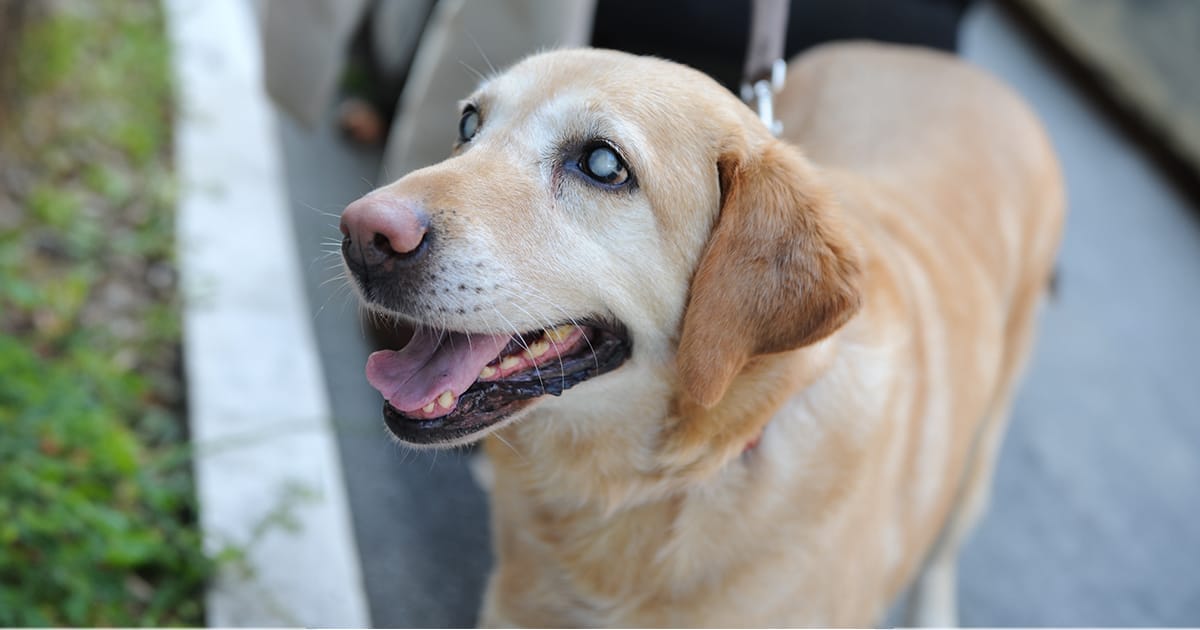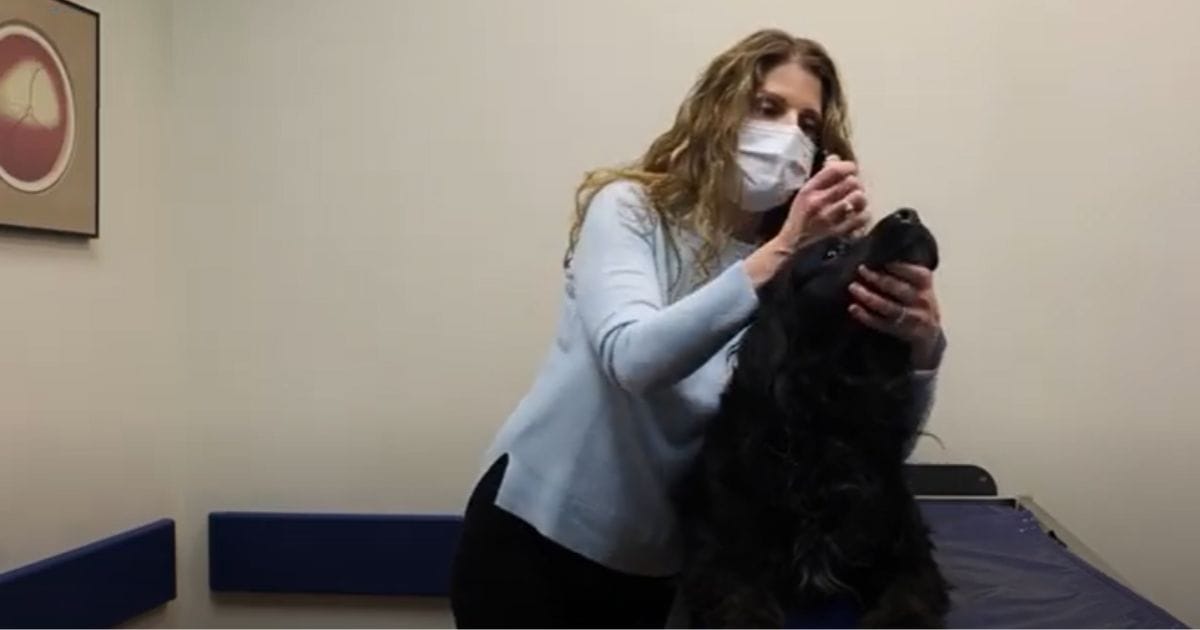What to Expect During Your Pet’s Eye Exam
Pet eye exams include a check of tear production, measuring eye pressure, and a thorough eye check by a veterinary ophthalmologist.
When you visit your family doctor for a regular checkup, he or she probably looked at your eyes with a light or asked you to read an eye chart. But if you need glasses or have special concerns, you most likely made an appointment to visit an eye doctor. The same is true for your pet. Your family veterinarian will look at your pet’s eyes during yearly checkups, but there are times your pet would benefit from a visit to their own eye doctor—a veterinary ophthalmologist. Your pet cannot tell you they are having trouble seeing though, so how do you know it’s time for a visit to an ophthalmologist?
What are the symptoms of eye problems?
There are a variety of symptoms you can look for in your pet that might mean your pet is having difficulty seeing or experiencing pain or discomfort in their eyes.
- Bumping into things or problems navigating
- Cloudy eyes
- Cross-eyed gaze
- Discoloration or redness of the eye
- Excessive or colored discharge
- Film over the eye
- Injuries to the eye
- Pawing at their eye
- Squinting or not opening an eye
- Swollen or bulging eye
- Visible third eyelid
Why might your pet need an ophthalmologist?
Veterinary ophthalmologists undergo three to four additional years of training focused on understanding and treating eye conditions. They have highly specialized equipment, identical to that used by your own eye doctor, to examine and provide both medical and surgical therapy to treat your pet. Some of the conditions that benefit from the help of a veterinary ophthalmologist include cataracts, corneal ulcers, dry eye, glaucoma, inflammatory conditions, and diseases of the retina. Veterinary ophthalmologists can work with other specialists when diseases affect multiple body systems to provide the most comprehensive care.
What can you expect during your pet’s eye exam?
A routine appointment from start to finish is around an hour. Before your pet’s appointment, we will obtain and review the medical records from your family veterinarian. The ophthalmology team will start by asking you questions about both your pet’s general health as well as the eye concerns. Eye exams are typically painless for your pet, but they do need to remain still so an ophthalmology team member will help hold your pet still during the exam. Additionally, your pet may get eye drops to dilate the eye. This enlarges the pupil making it easier to see into the back of the eye. In general, the specialist wants to see how the eyes respond to light, the clarity within the eye, and examine the structures in and around the eye.
What tests are performed during your pet’s eye exam?
Your pet will undergo a series of tests as part of a complete eye exam.
- First, they will check the tear production. This is called a Schirmer tear test. A small strip of specialized paper is placed inside the lower eyelid for 60 seconds to collect and measure tear production.
- Next, they will measure the eye pressure. Your pet will get some eye drops to numb the eye. A tonometer is then used, a special tool that measures the pressure within the eye. This tests for glaucoma.
- The ophthalmologist then examines the front of the eye, specifically looking at the eyelids, cornea, iris, and lens. The ophthalmologist will use a slit lamp, a handheld microscope that shines a light into the eye and lets them evaluate detailed sections of the eye.
- Finally, the ophthalmologist looks at the structures in the back of the eye including the retina and optic nerve. The ophthalmologist uses a special headset and light (an indirect ophthalmoscope) along with a magnifying lens to look for inflammation, signs of retinal detachment, and changes to the optic nerve.
Following the exam, the ophthalmologist will discuss the diagnosis and treatment options. Based on findings, additional testing may be recommended. In all situations, the ophthalmologist will go through the information with you in detail and answer any questions you have so that you understand how to best care for your pet.
Caring for your pet’s eyes at home
Catching eye diseases early and starting treatment is key to preserving your pet’s vision. There are things you can do at home to help protect your pet’s eyes.
- Look at your pet’s eyes regularly. In a well-lit room, look carefully at each eye to look for some of the symptoms listed above. Ensure the eyes look bright and clear.
- Clean your pet’s eyes. Gently wipe around your pet’s eyes to clear any discharge, dust, or debris. Use a damp cloth or cotton ball and wipe from the inside of the eye to the outside. Learn more about how to handle tear staining (link: https://www.medvet.com/tear-staining-in-dogs/).
- Keep your pet well groomed. Ensure that any hair near the eyes is trimmed and cleared away from the eyes so you can visualize the eyes for any changes.
- Don’t allow your pet to hang their head out the window of a moving vehicle. Debris kicked up from other vehicles can cause severe damage to your pet’s eyes. Instead, crack the window so your pet can enjoy the breeze without putting themselves in danger.
Partnering for your pet’s eye health
Your pet’s vision is important so make eye care a priority. Be sure to talk with your family veterinarian if you have any concerns about your pet’s eye health and visit a veterinarian right away if there are any injuries to the eye. You can learn more about MedVet Ophthalmology or find one of our Board-certified Ophthalmologists. Our emergency doctors are also able to provide initial treatment for many eye diseases and injuries or emergency situations. Find a MedVet location near you.
FAQs
Contents



